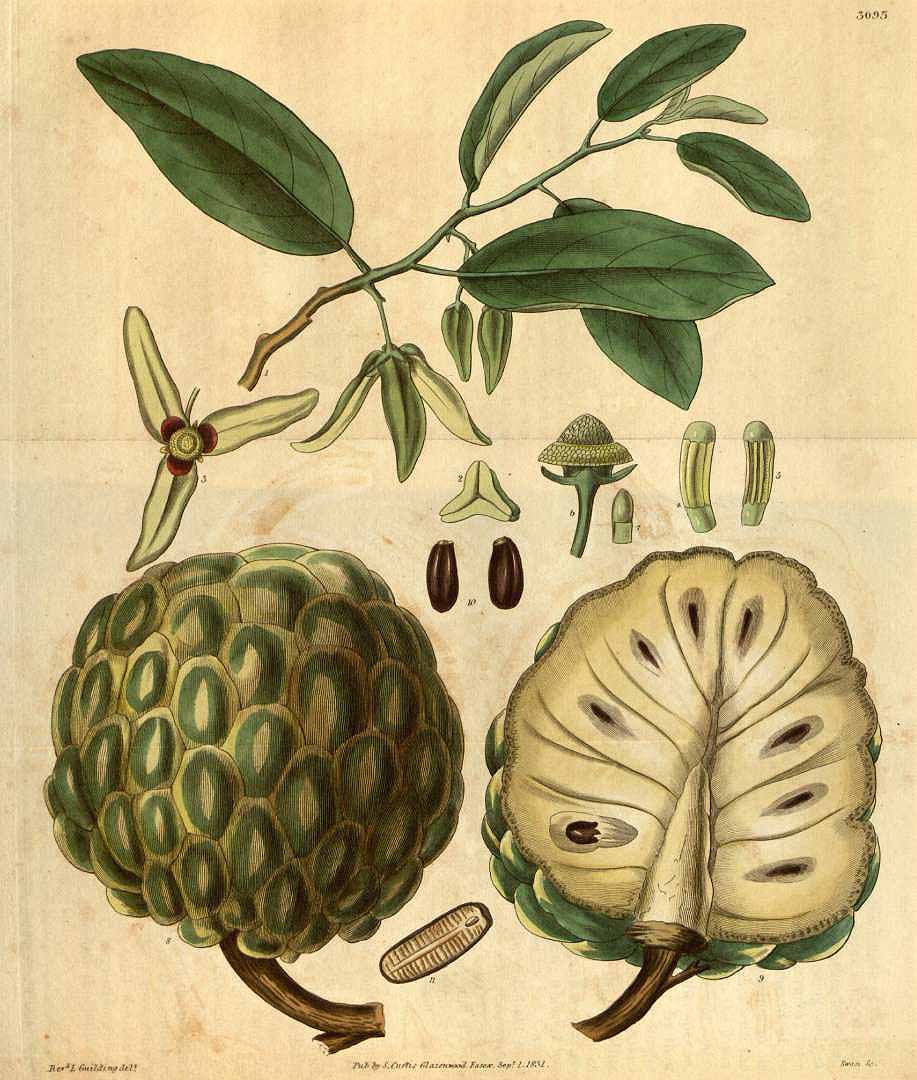! Nouveau site ici !
Vita > Plantae > Magnoliophyta > Magnoliopsida > Magnoliales >
Annonaceae > Annona
Annona squamosa
(Attier)

 | ***
| ***
Vita > Plantae > Magnoliophyta > Magnoliopsida > Magnoliales >
Annonaceae > Annona
Annona squamosa
(Attier)

-2/-2,5°C (-1°C?), abimé dès 0°C
Un arbre feuillu touffu atteignant 6 m de haut. Il a des branches irrégulières. Les feuilles sont oblongues et étroites, souvent 12 cm de long sur 4 cm de large. Les feuilles ont des poils fins en dessous. L... (traduction automatique)
→suite
⬀
Le  donne accès au menu
donne accès au menu (c'est votre point de repère) 😊 ;
En dessous vous avez la classification, à partir de la vie (Vita, premier rang) jusqu'à la classe au dessus de la plante, dont vous trouvez ensuite le nom scientifique/botanique (latin) puis le nom commun (français), le cas échéant ;
C'est aussi un lien vers la fiche complète (tout comme la ✖, en bas à droite, et le +, en dessous de la description) ;
Vient alors l'illustration (ou ce qui la remplace, en attendant), la comestibilité :
Et en bas
⬂



